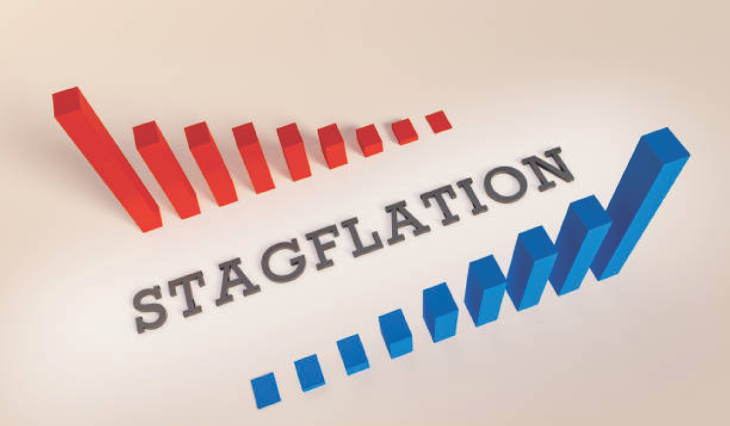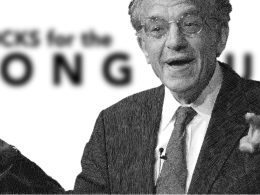by Hubert Marleau, Market Economist, Palos Management
February 28, 2025.
I ended last week’s commentary by saying that the stock market needed to take a breather. Under the flurry of rapid-fire statements, official pronouncements and executive orders from Washington, the economic and geopolitical environment has seriously deteriorated since the presidential election of last November; and while the US economy has remained relatively solid, the majority of Americans are down on it, having grown increasingly anxious with the rolling out of Trump’s agenda on tariffs and contradictory answers about his plans to enact them. As a result, countries, companies and investors around the world have been under severe pressure to come up with ideas to head them off.
Indeed, it appears that Trump is using them as an end, rather than a means to an end. This whole business has blossomed into “reciprocal tariffs” to match foreign duties on US goods: an impossible idea that would be equally impossible to administer, given the complexity of international trade. The bottom line is that the goal of “Make America Great Again” could turn maliciously into “Make America Alone Again”.
Peter Zeihan, a well known geopolitical thinker, fears that if the Administration continues down this path, US international trade would likely come to a screeching stop, followed by a serious recession, combined with relentless inflation-stagnation. In an editorial, the WSJ blasted Trump on his tariff plans, stating that if he intends to hurt the auto industry, then he should go ahead with them. Meanwhile the car makers have been hit hard: Ford and GM are down more than 10% since voting day. Politico found that the majority of Americans opposed tariffs against Canada, Mexico and the UK because they would not only damage business activity, raise input costs and increase consumer prices, but would also damage relations between trusted allies. According to a Harris Poll, 60% of adult Americans believe that tariffs will lead to higher prices and 44% to lower growth. (Interestingly, many Republican leaders aren’t sold on Trump’s trade agenda themselves.)
IIn this connection, a pair of surveys conducted in February have revealed a darkening economic outlook for inflation and growth. The mood among consumers is dismal because they are getting worried about stagflation. The latest batch of both soft and hard economic indicators has been weak, without any price abatement. Indeed, Friday’s BEA January report more or less confirmed this: the core PCE price index increased 2.6% y/y with a run rate of 2.9% in the last 3 months and consumer spending decreased $30.7 billion, raising the personal savings to 4.6% of disposable income for the first time in 8 months, perhaps for cautionary reasons. The Atlanta Fed’s GDPNow model estimate for real economic activity for Q1 is -1.5%. It may not amount to much, but there was a grassroots effort on Friday to buy nothing to protest high prices. The economic blackout gave the WOKE a bad name, but the movement illustrates grievances graphically..
The bottom line here is that consumers are under stress to make ends meet. First, the University of Michigan’s survey of consumer sentiment, which is more affected by inflation, showed that a startling 40% of respondents spontaneously cited tariffs as a major concern, compared to only 2% before the election, causing a dramatic deterioration in all 5 components of the index: a rare occurence, which was equally startling for being unanimous across different demographic groups. Second, the Consumer Confidence Index, which is more about employment, confirmed a similar decline, particularly a sharp drop in the expectation component. Actually, bond traders saw this coming, being of the view that in one year’s time growth will only be 0.50%, compared to 1.50% real rates 6 weeks ago, whereas their 1-year inflation expectation increased 125 bps to 4.00%, scaring investors and spooking traders alike. The CNN’s Fear & Greed Index, which is based on momentum, breadth, options activity, the junk-bond market, and demand for safe-haven assets, touched 21, a level that reflects extreme fear.
The underlying problem is that without clarity on tariffs, we have extreme uncertainty. The Global Economic Policy Uncertainty Index is above 400, which is as high as it was when Covid struck in 2020.
In the meantime, the S&P 500 fell 1.0% in the week ended February 28, wiping out all the gains this year so far. In fact, the only thing that could prevent this second breather from turning into a bear market would be the activation of the “Trump put”: otherwise the new golden age will be a very short one. Some say the S&P 500 would have to fall to 5500 - its estimated fair value - to activate such a put.
I think, however, that the rout in cryptocurrencies, - one of the most popular Trump trades - will give him a dramatic reality check that enough is enough. Bitcoin’s price is down 23% since it hit an all-time high of $109,241 less than 6 weeks ago, and the fall is generally attributed to the unpopularity of tariffs on Mexican and Canadian imported goods, which are working against the idea of making the U.S. the crypto capital of the planet, and Bitcoin superpower of the world.
At moments like this, it's important to focus on crucial variables (inflation and unemployment) and to figure out where inflection points are. What is just right is core CPI below 3.0% and an unemployment rate below 4.5%. Anything else would not be good. This begs 2 questions. Will tariffs and immigration enforcement rekindle inflation and/or reduce growth? The vibe is moderately recessionary, the mindset is mildly inflationary. This could translate into a tolerable mini stagflation scenario.
P.S. Canadian public officials are in Washington, hoping to give evidence that they are on the case to secure the borders from illegal drugs and migration. US border data shows a 97% decline in fentanyl seizures coming from Canada from December to January. In that time, Canada began deploying its $1.3 billion border security package, appointed a fentanyl czar, and reduced illegal migration by 90% in recent months per Bloomberg. I devoutly hope that these efforts will be positively received. An easy way out for Canada on this is to match Washington tariffs on China, like Mexico is about to do.
Copyright © Palos Management















